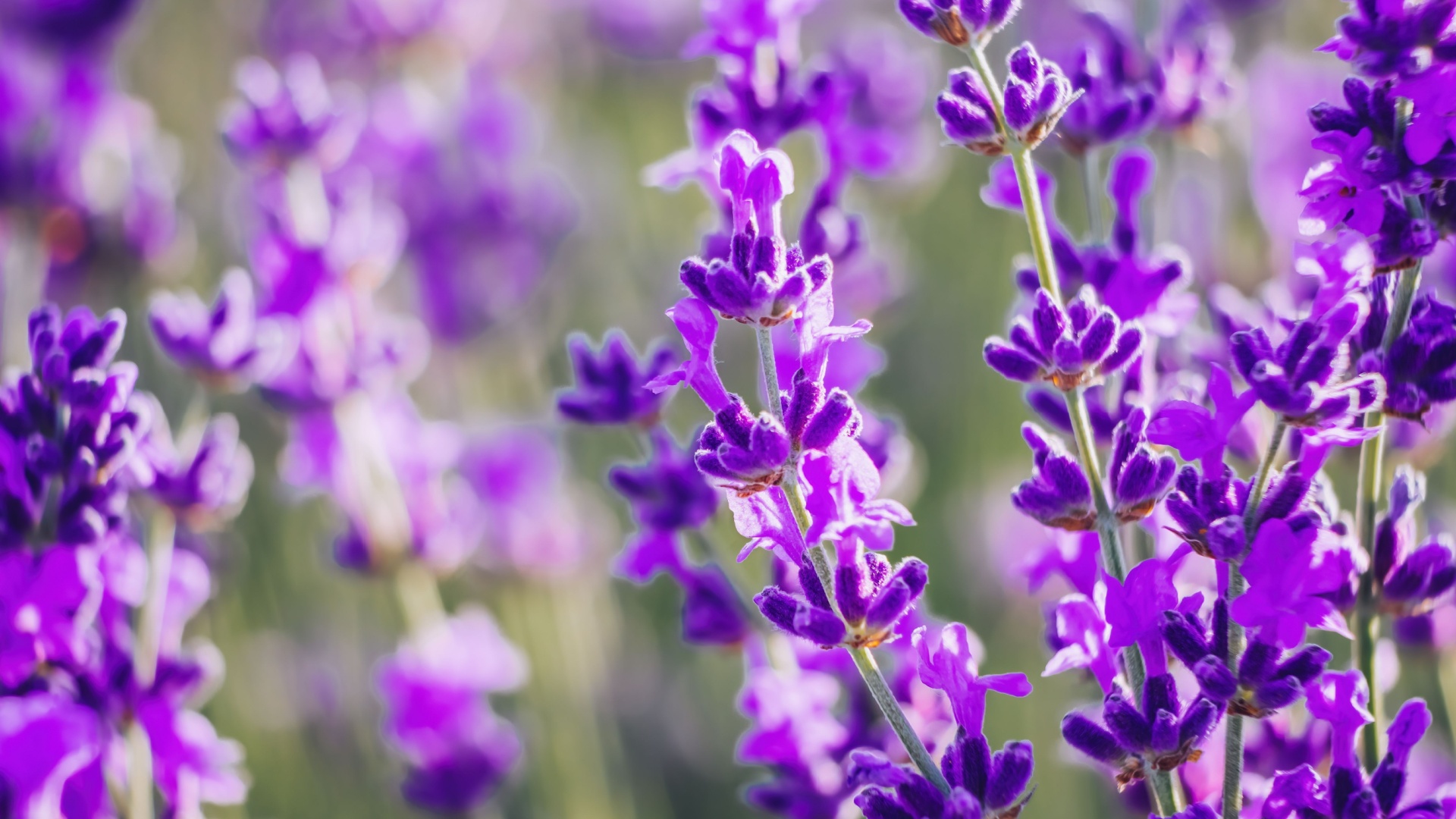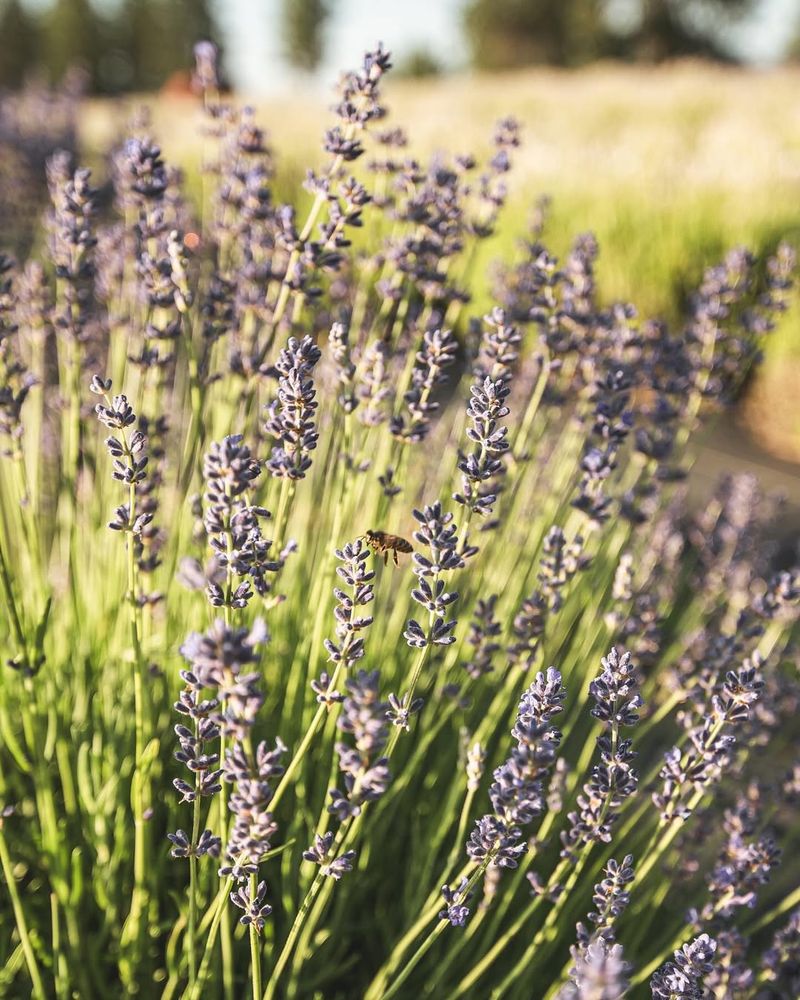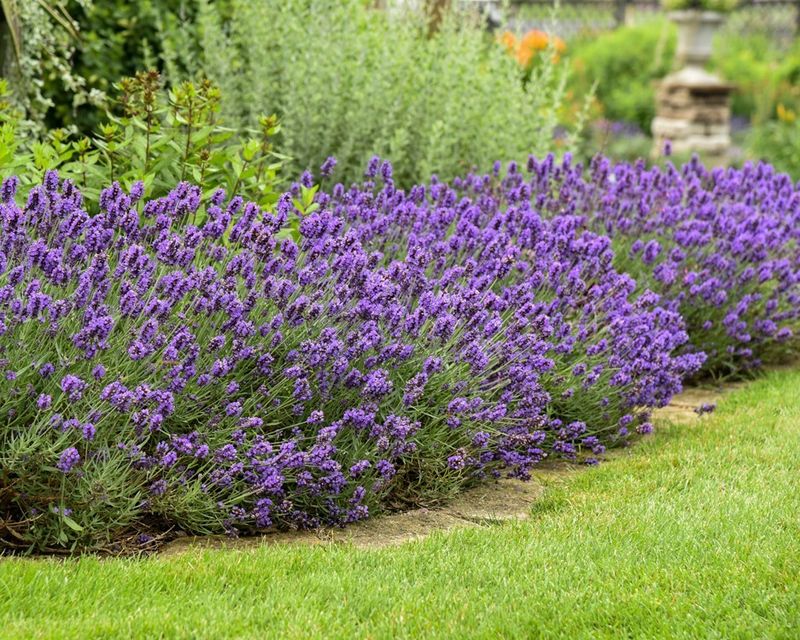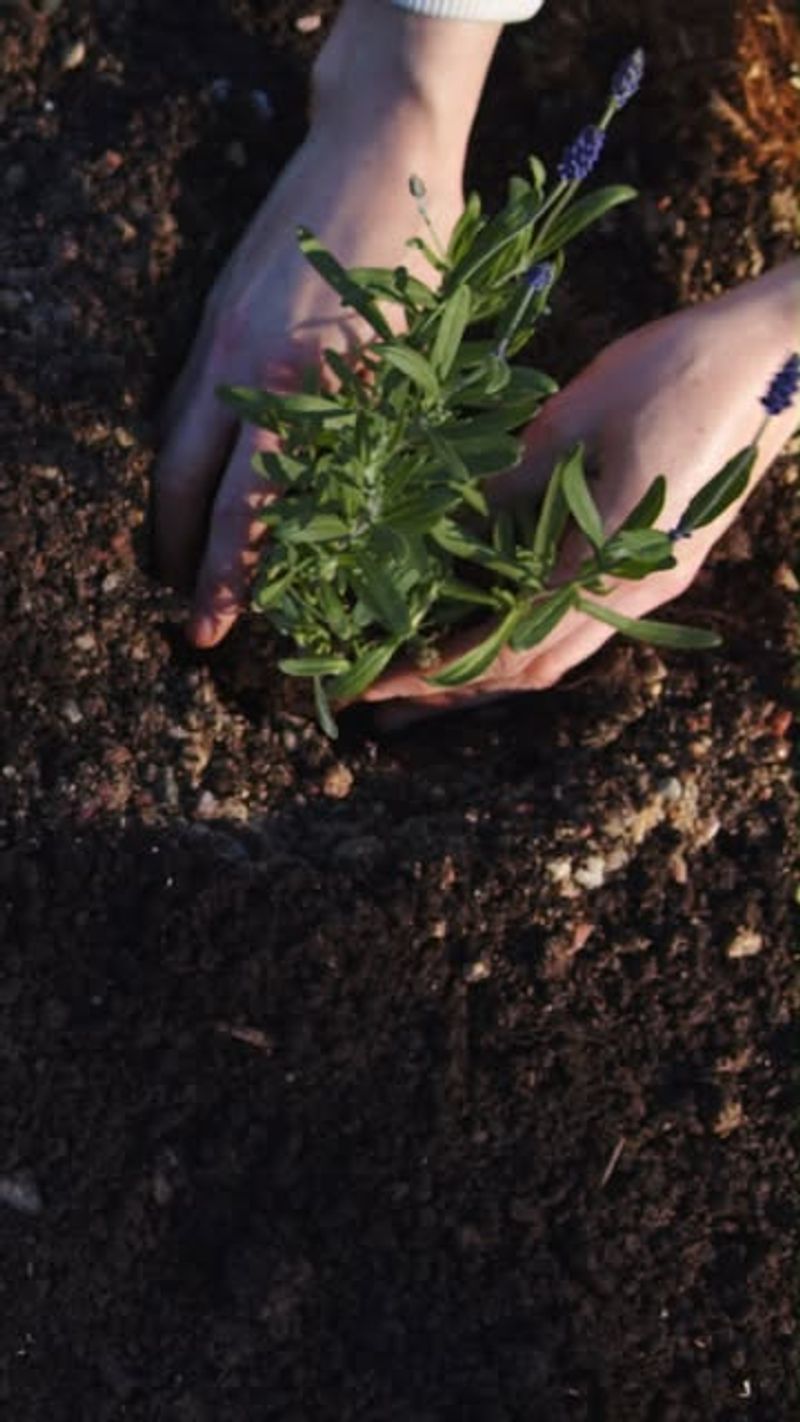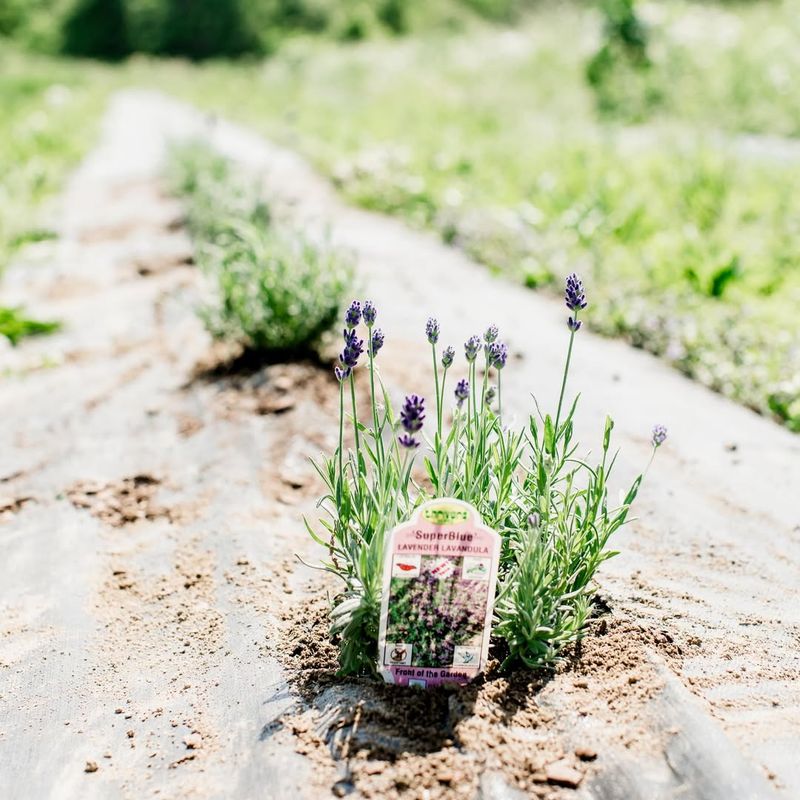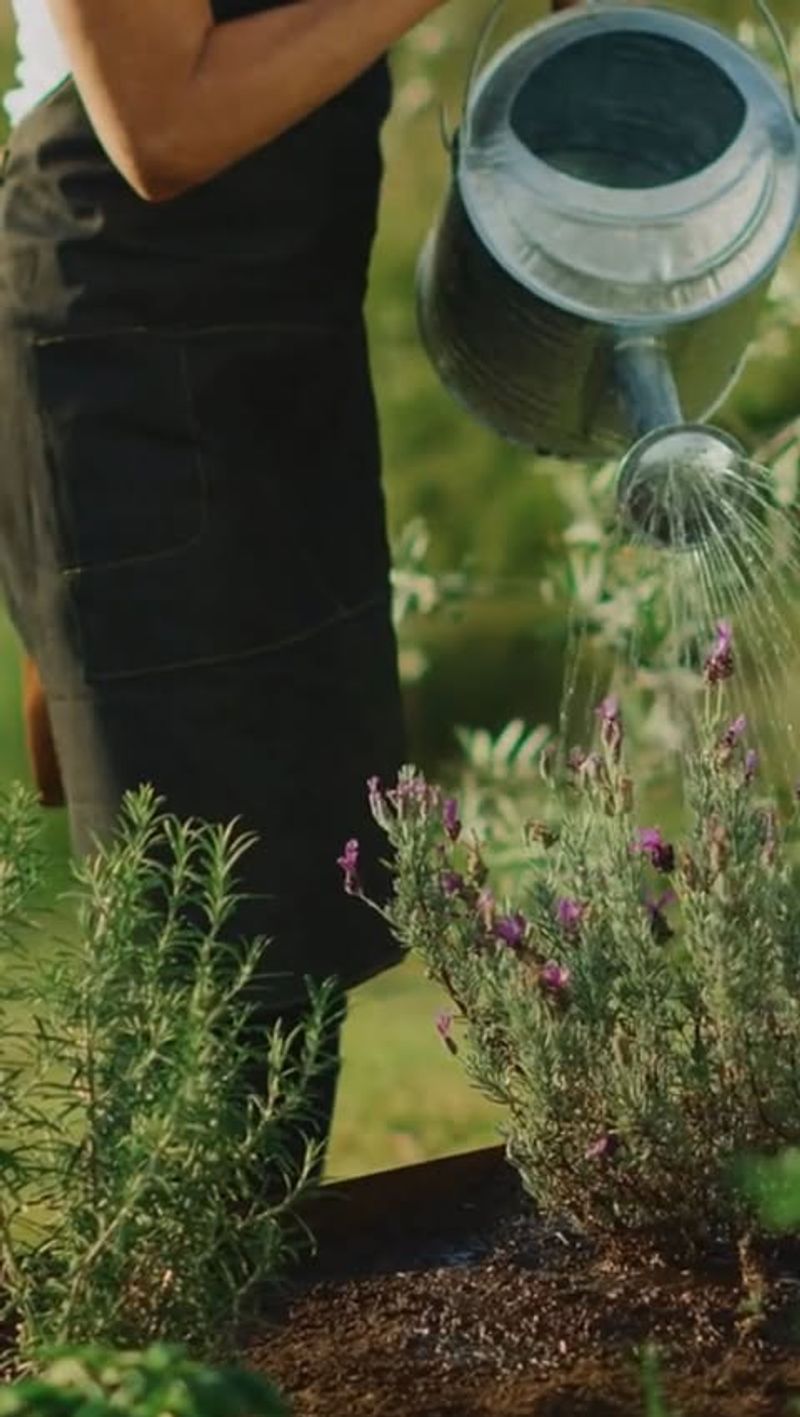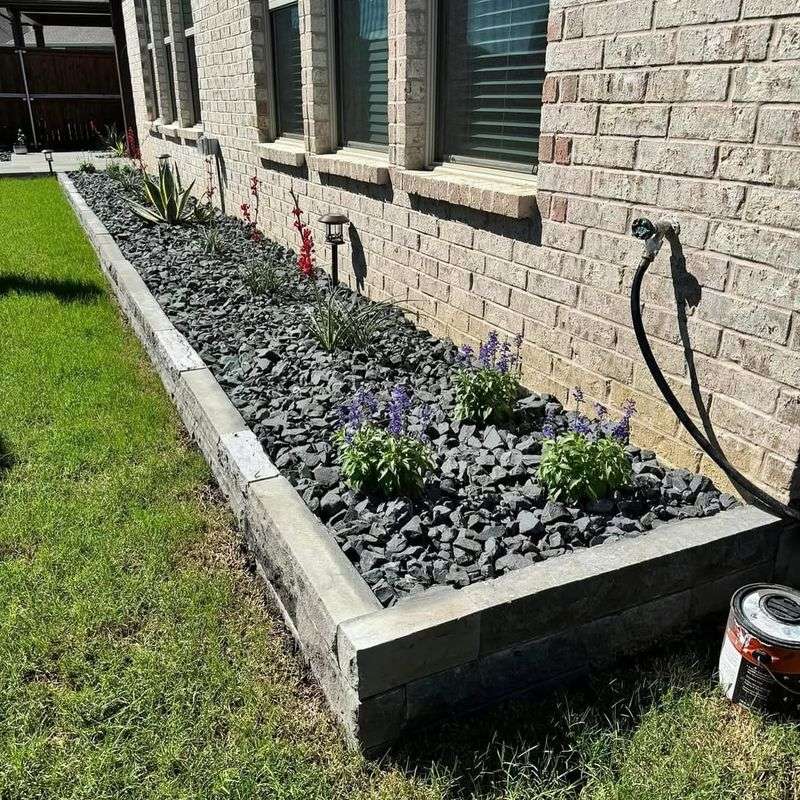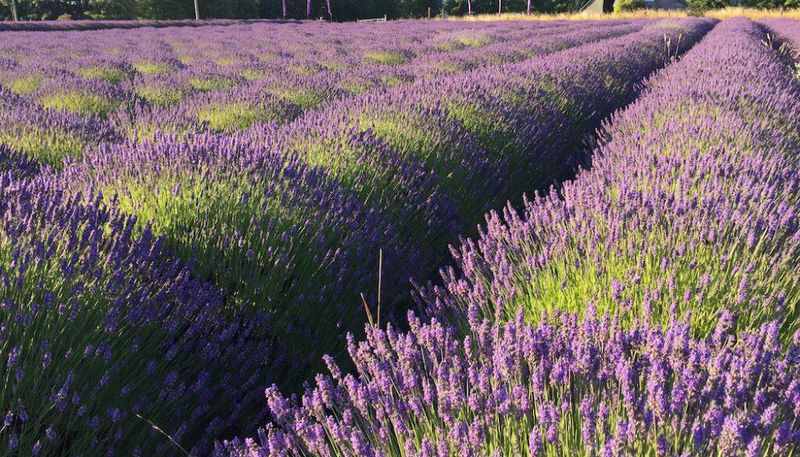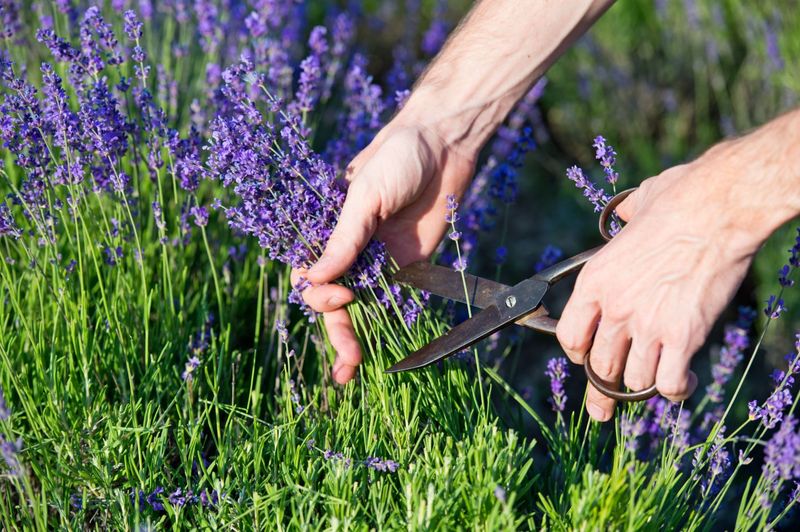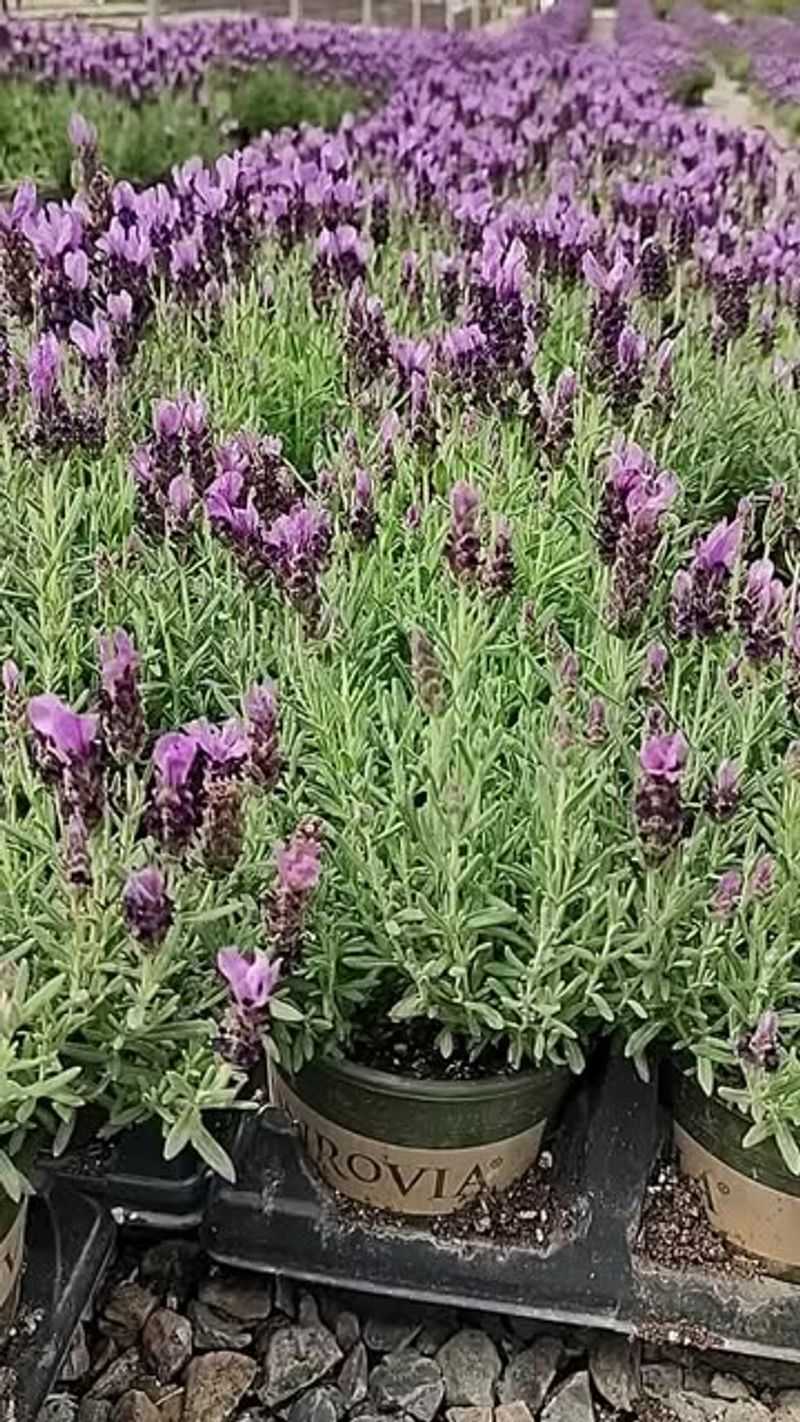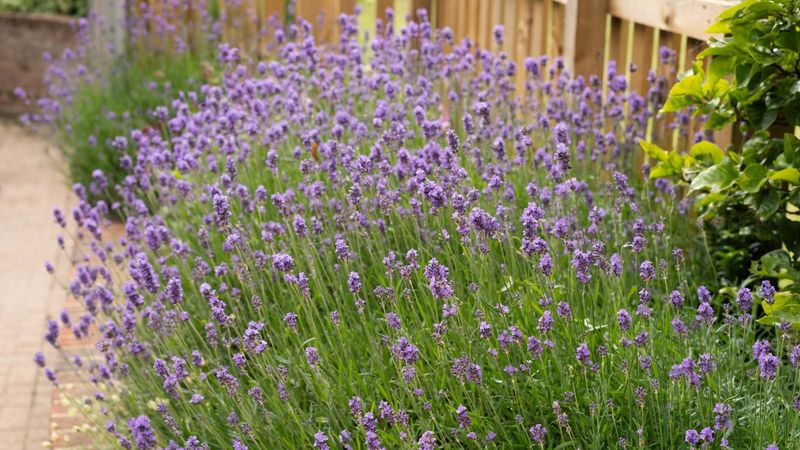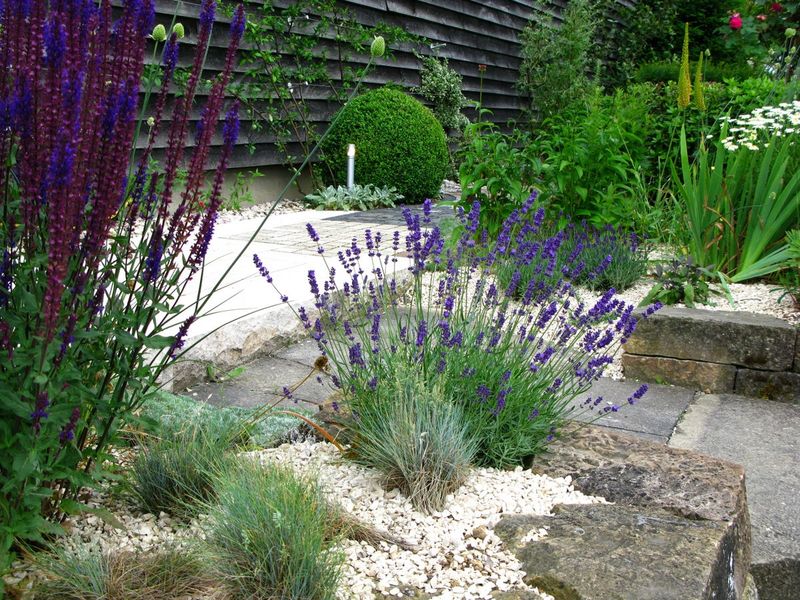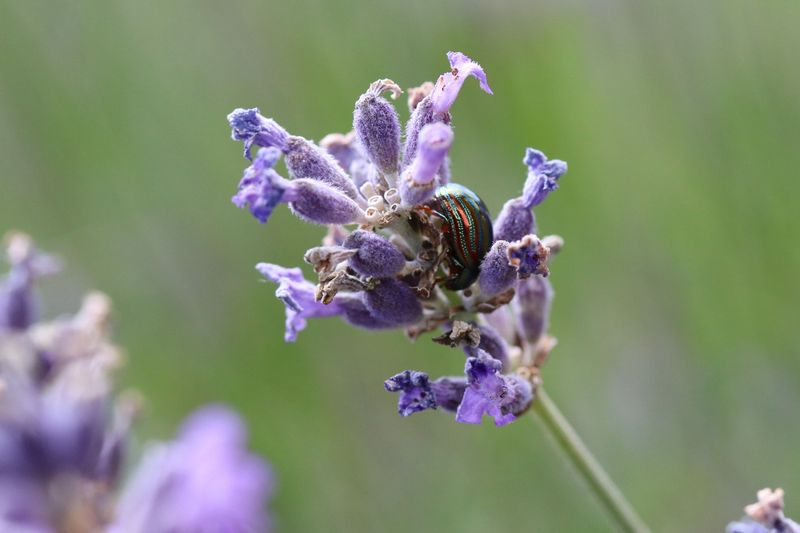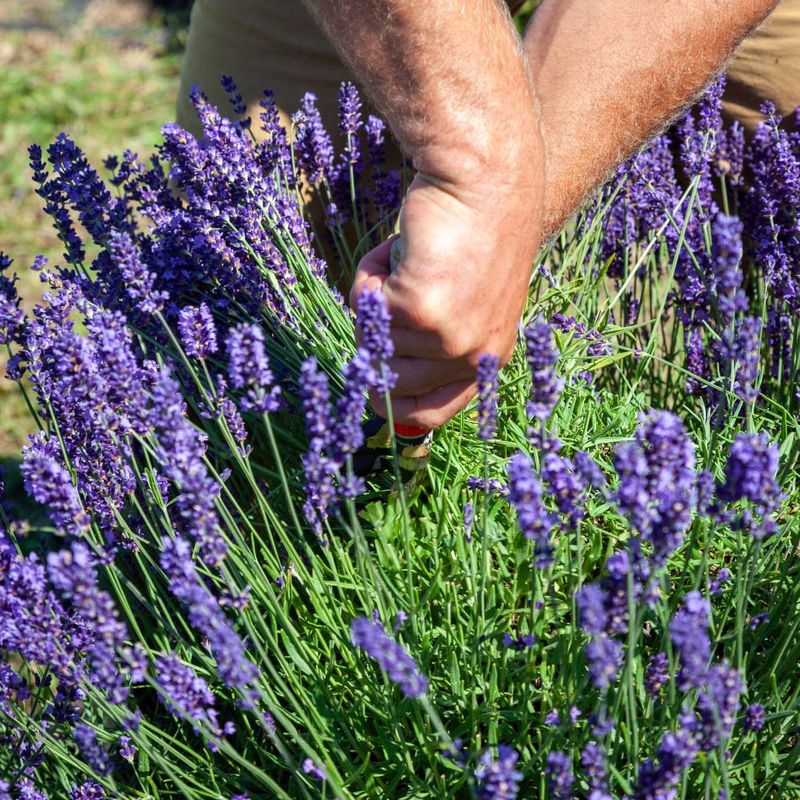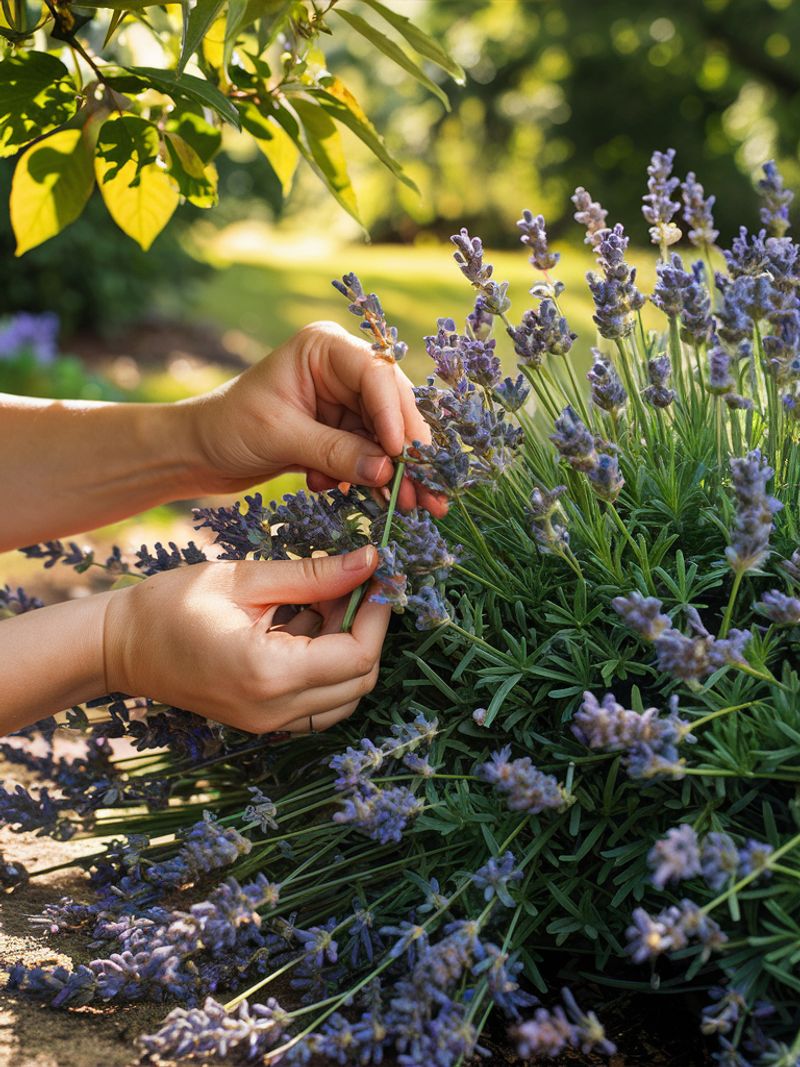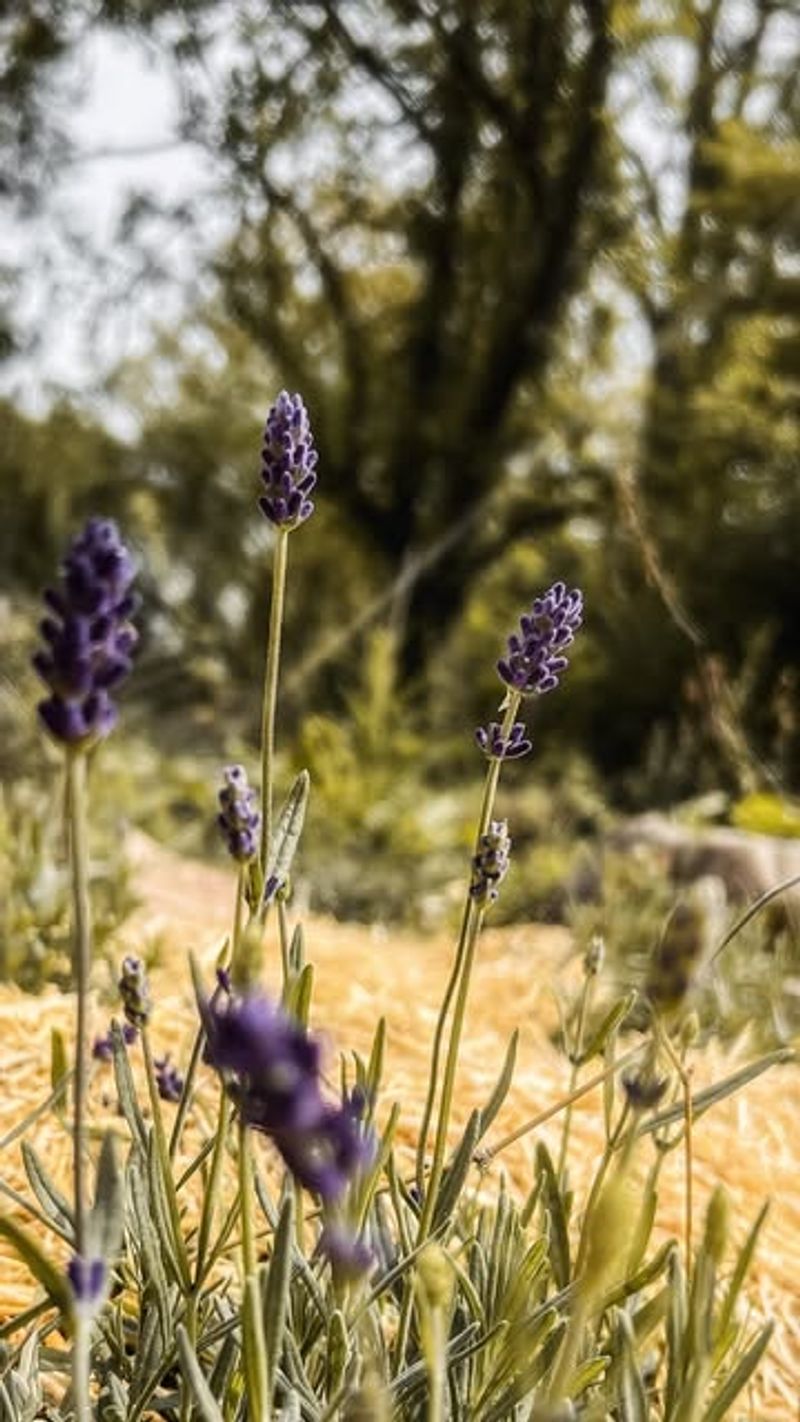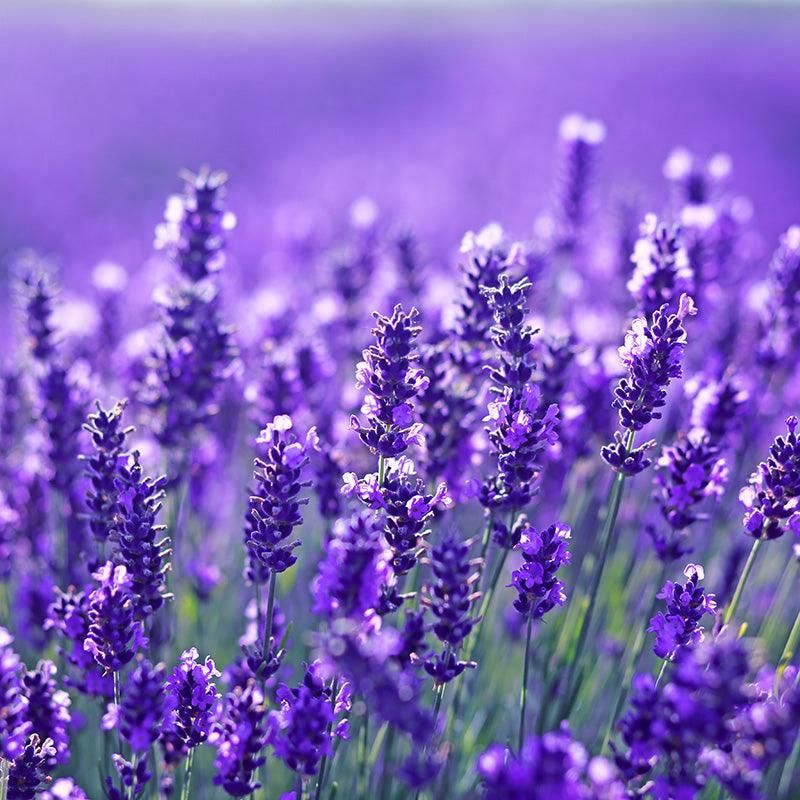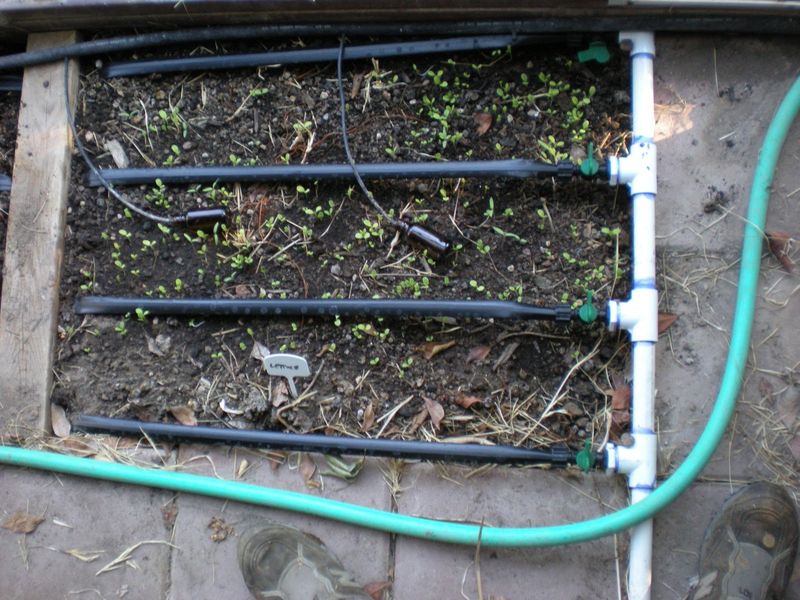Lavender won’t bloom beautifully on its own—it needs the right care at the right time. And that time is now. From trimming and feeding to airflow and sun exposure, these 17 simple but essential tasks will keep your lavender lush, fragrant, and blooming strong all summer long.
Don’t wait—your best blooms depend on it.
1. Prune In Early Spring
Grab your pruning shears when the first signs of new growth appear. Cutting back lavender by about one-third helps remove winter damage and encourages bushier growth with more flowering stems.
Avoid cutting into the woody parts of the plant as lavender won’t regrow from old wood. Focus instead on trimming the green, flexible stems just above where the woody part begins.
Spring pruning also improves air circulation, reducing the risk of fungal diseases that can stop your lavender from blooming properly.
2. Choose The Sunniest Spot
Lavender absolutely craves sunshine – at least 6-8 hours of direct sunlight daily keeps it happy and flowering abundantly. Plants that receive insufficient light produce fewer blooms and become leggy as they stretch toward the sun.
Southern or western exposures typically offer the best light conditions. If your garden has limited sunny spots, prioritize your lavender for these premium locations.
Remember that even partial shade for part of the day can significantly reduce flowering, so full sun exposure remains essential for maximum blooms.
3. Improve Drainage Immediately
Lavender roots will rot in soggy soil, preventing healthy growth and flowering. Create raised beds or mounds if your garden has heavy clay or poor drainage.
Mix plenty of coarse sand, fine gravel, or perlite into your planting area to increase drainage. The ideal soil should feel gritty and allow water to pass through quickly rather than pooling around the roots.
For container-grown lavender, ensure pots have large drainage holes and elevate them slightly using pot feet or small stones to allow excess water to escape freely.
4. Add Limestone To The Soil
Lavender thrives in alkaline conditions with a pH between 6.5 and 8.0. Sprinkle agricultural limestone around your plants and gently work it into the soil surface to create the sweet soil lavender loves.
This simple addition neutralizes acidic soils and provides calcium, which strengthens cell walls in the plants. Stronger cells mean better drought resistance and more energy for producing those gorgeous purple blooms.
Apply limestone in spring as plants begin active growth, using about 2-3 pounds per 100 square feet of garden space.
5. Water Deeply But Infrequently
Lavender developed in Mediterranean regions where rainfall is sparse but deep. Mimic these conditions by watering thoroughly once the soil has dried out completely, usually every 1-2 weeks depending on your climate.
Deep watering encourages roots to grow downward, increasing drought tolerance. Aim for the soil, not the foliage, as wet leaves can promote fungal problems that inhibit flowering.
During extreme heat waves, you might need to water more often, but always let the soil dry between waterings to prevent root rot.
6. Mulch With Gravel Or Stones
Unlike most garden plants, lavender benefits from inorganic mulches like pea gravel, crushed shells, or small stones. These materials reflect heat and light back to the plant while keeping the crown dry.
Organic mulches like bark or compost hold moisture against the stems, potentially causing rot. The reflective quality of stone mulch also intensifies sunlight on the foliage, which lavender adores.
Apply a 2-inch layer around plants, keeping it slightly away from the main stems to prevent moisture accumulation at the crown.
7. Fertilize Lightly Or Not At All
Lavender actually blooms more profusely in poor soil with minimal fertilizer. Too much nitrogen promotes lush foliage at the expense of flowers, so resist the urge to feed heavily.
If your plants look pale or growth seems stunted, apply a light dose of balanced, slow-release fertilizer in early spring. Choose one with equal or lower nitrogen compared to phosphorus and potassium (like 5-5-5 or 5-10-10).
For established plants in reasonably good soil, skip fertilizer entirely and let their naturally frugal nature shine through with abundant blooms.
8. Deadhead Spent Flowers Regularly
Snip off faded lavender blooms promptly to encourage new flower production throughout summer. Plants naturally focus energy on seed production once flowers fade, but removing spent blooms redirects that energy into creating new buds.
Use clean, sharp scissors or pruners to cut just below the flower stalk, taking care not to remove any developing buds nearby. This simple maintenance task takes just minutes but can double your lavender’s flowering period.
Bonus: collect the trimmed flower stalks for drying and using in sachets or potpourri!
9. Space Plants Properly
Give each lavender plant room to breathe by spacing them 2-3 feet apart. Crowded plants compete for nutrients and light while restricting airflow, which can lead to disease problems and reduced flowering.
Proper spacing also allows sunlight to reach all sides of each plant, resulting in more even growth and bloom production. The extra space might look empty at first, but mature lavender will fill in beautifully.
If you’ve already planted too closely, consider carefully transplanting every other plant to give the remaining ones more room to thrive and produce abundant flowers.
10. Protect From Harsh Winds
Strong winds can damage lavender’s delicate flower stems and dry out plants excessively. Create windbreaks using fences, walls, or larger companion plants positioned on the prevailing wind side of your lavender bed.
The ideal protection blocks harsh gusts while still allowing good air circulation around the plants. Even temporary barriers during stormy periods can make a difference in how well your lavender blooms.
In coastal areas with constant wind, consider planting lavender in dips or hollows in the landscape where they’ll naturally receive some shelter while still getting full sun.
11. Control Weeds Diligently
Weeds compete with lavender for water and nutrients, potentially reducing flower production. Their shallow root systems make lavender plants particularly vulnerable to this competition.
Pull weeds by hand rather than hoeing deeply, which might damage lavender’s surface roots. The stone mulch mentioned earlier helps tremendously with weed suppression while creating ideal growing conditions.
For persistent weed problems, consider laying landscape fabric beneath the stone mulch, cutting holes only where the lavender plants emerge, creating a nearly maintenance-free bed that allows your plants to focus energy on flowering.
12. Monitor For Pests Early
While lavender naturally repels many insects, spittlebugs and aphids occasionally attack, reducing vigor and flowering. Inspect plants weekly, looking for telltale signs like distorted growth or the foamy secretions of spittlebugs.
A strong spray of water often dislodges pests before they cause serious damage. For persistent problems, insecticidal soap applied in the evening works well without harming beneficial insects that visit lavender flowers.
Encouraging natural predators like ladybugs and lacewings by avoiding broad-spectrum pesticides creates a balanced garden ecosystem where pests rarely reach damaging levels.
13. Harvest At The Right Moment
Perfect timing maximizes both the current bloom display and future flowering. Harvest lavender when approximately one-third to half of the flower buds on each stem have opened, typically in mid-morning after dew has dried but before the day’s heat.
Cutting at this stage stimulates plants to produce more flower stalks while capturing the strongest fragrance and oil content. Use sharp scissors to cut stems just above a leaf node or junction.
For ornamental display rather than harvest, deadhead only the spent flowers instead of cutting entire stems, allowing the remaining buds to open and extend the blooming period.
14. Provide Afternoon Shade In Extreme Heat
During heat waves above 90°F (32°C), even sun-loving lavender can become stressed, causing it to stop flowering. Create temporary shade using garden umbrellas, shade cloth, or row covers during the hottest afternoon hours (typically 2-5 PM).
This protection prevents flower buds from drying out before they can open fully. Container-grown lavender can simply be moved to a location with afternoon shade during extreme heat periods.
Resume full sun exposure once temperatures moderate to keep plants from stretching or producing fewer flowers due to insufficient light.
15. Replace Aging Plants Strategically
Lavender typically peaks in flowering performance between years 3-5, gradually declining afterward. Rather than watching production dwindle, establish new plants every few years to maintain consistent summer-long blooming in your garden.
Take softwood cuttings from your best performers in early summer to propagate identical plants. Place these newcomers in different garden areas from the parent plants to avoid soil-borne disease buildup.
Rotating lavender locations also prevents soil depletion of specific nutrients, ensuring each new generation has optimal conditions for abundant flowering throughout summer.
16. Select Reblooming Varieties
Not all lavender types bloom equally throughout summer. English lavenders (Lavandula angustifolia) typically produce one magnificent flush of flowers, while lavandin hybrids (Lavandula x intermedia) and some newer cultivars rebloom more reliably.
‘Phenomenal’, ‘Grosso’, and ‘Provence’ varieties are excellent choices for extended flowering. These repeat bloomers produce a spectacular early summer display followed by subsequent waves of flowers when properly deadheaded.
Plant several different varieties with staggered bloom times to ensure continuous lavender flowers from early summer through fall.
17. Avoid Overhead Irrigation
Lavender flowers and foliage prefer staying dry. Overhead sprinklers wet the flowers, causing them to turn brown prematurely and significantly shortening bloom time.
Install drip irrigation or soaker hoses that deliver water directly to the soil around plants. This targeted approach not only keeps flowers pristine but also reduces disease pressure from fungi that thrive in moist conditions.
If hand-watering, always direct the stream at the base of plants rather than showering from above, especially during flowering periods when blooms are particularly vulnerable to water damage.

